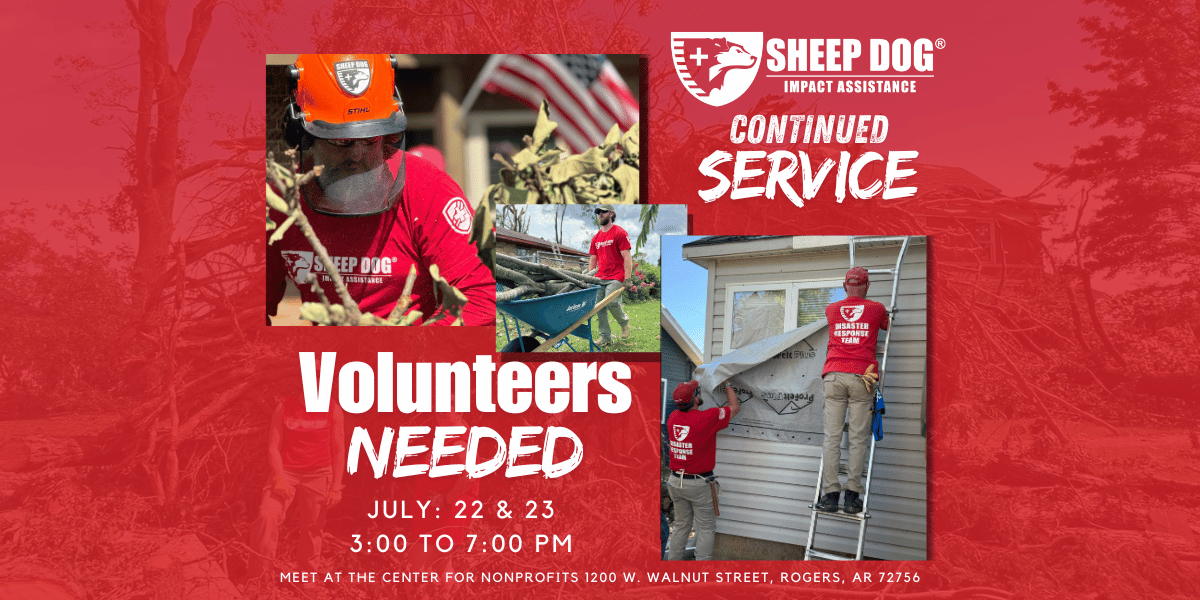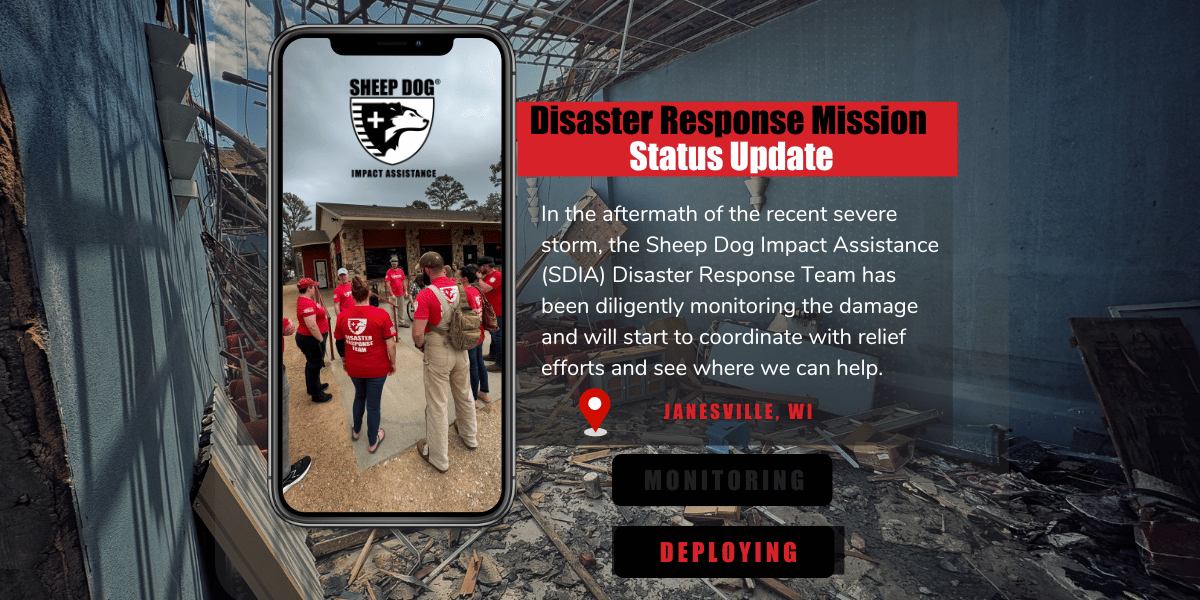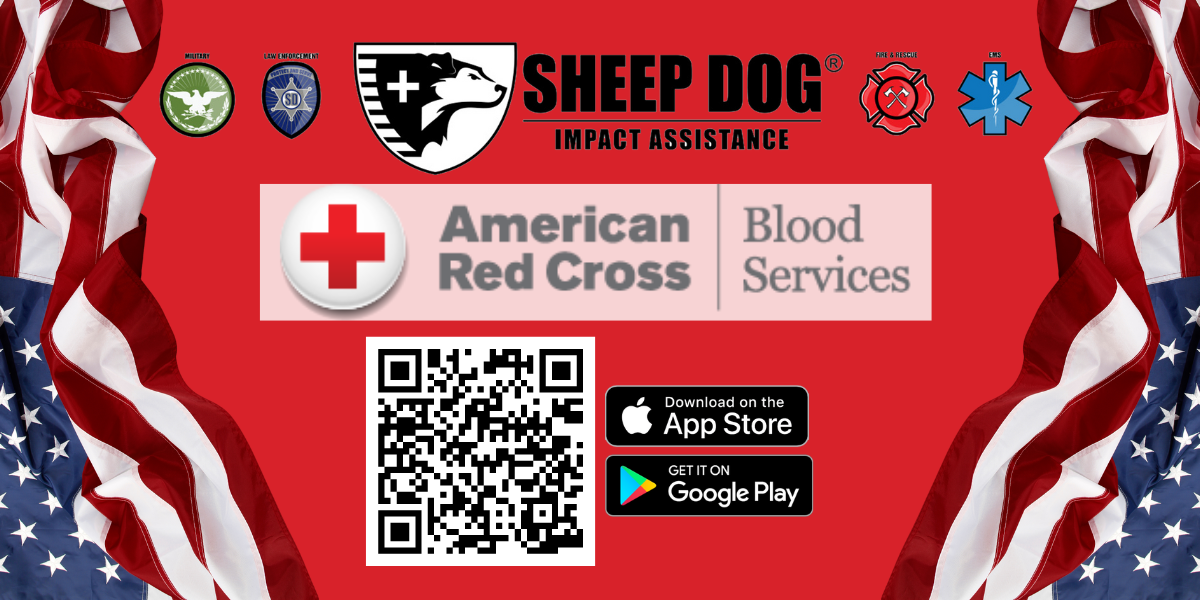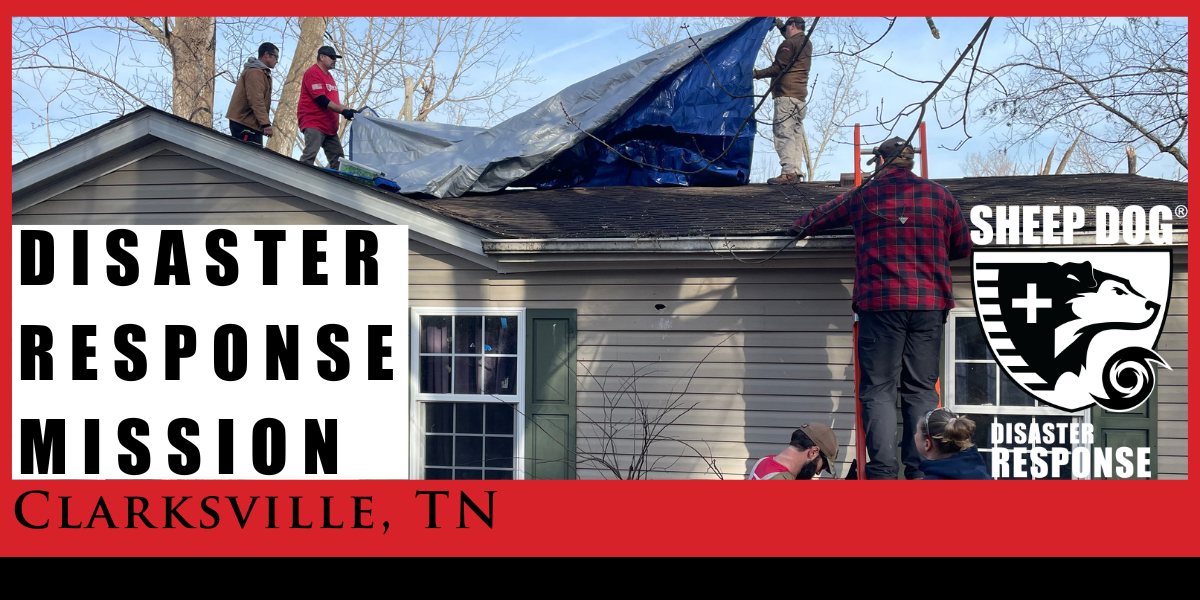NWA DRM- Volunteers Needed!
Join Sheep Dog Impact Assistance (SDIA) as we continue our mission to help those affected by recent tornado damage in Northwest Arkansas. Your support is crucial in rebuilding our community and providing much-needed relief to several of our elderly neighbors.
No experience is necessary to volunteer! We’ll provide all the training and protective equipment you need. Whether you’re a skilled professional or just eager to help, we welcome everyone to make a difference.
Mission Note: We have surveyed several of the properties and have found that we need heavy equipment on several of them and are looking for experienced operators with tractor or skid steer capabilities.
Disaster Response Mission: Janesville, WI 2024
n the wake of the tornadoes that have devastated the community of Janesville, WI, our team has mobilized to assist the community. Our teams will be working together with our local first responders and emergency management personnel to help any way we can.
DISASTER RESPONSE MISSION: NWA STATUS UPDATE
Sheep Dog Impact Assistance is coordinating from the Center for Nonprofits (1200 W. Walnut St., Rogers, AR 72756) parking lot. The back lot where the Sheep Dog vehicles are parked. There will be a daily meet-up and safety brief at 08:30 AM, every day through the weekend. To go out with a team be at the safety briefing.
We will have volunteer t-shirts for you but supplies are limited, if you have previous DRM attire please wear that. Please wear jeans and heavy shoes, bring gloves and if you have any personal safety equipment.
Disaster Response Mission: NWA Status Update
In the aftermath of the recent severe storm, the Sheep Dog Impact Assistance (SDIA) Disaster Response Team has been diligently monitoring the damage and is actively coordinating relief efforts. Northwest Arkansas is our home and this community is very important to us. Our teams will be working together with our local first responders and emergency management personnel to help any way we can.
You must register to assist us on our DRM mission.
Join us in Dallas!
We’re looking for dedicated volunteers to help make this event a success. Whether you can lend a hand for an hour or the entire weekend, your support makes a difference. Let’s bring all of Sheep Dog Nation together to honor the sacrifices of our military, veterans, first responders, and their families. Our goal is to see more than 200 volunteers wearing our t-shirts at this year’s event. Each volunteer will receive a shirt for each day you are at the event. SDIA has limited lodging accommodations available to support volunteers on a first come, first served basis.
Continued Service Opportunities
SDIA’s foundation and ongoing commitment to Continued Service revolve around disaster response, serving as a primary avenue for our Get Off The Couch® programming. These missions, a key component of our volunteerism, empower our Sheep Dogs to consistently contribute to their communities and country in times of need.
Disaster Response Mission
The Sheep Dog Impact Assistance Disaster Response team is on the ground in Clarksville, TN assisting residents in the aftermath of last weekend's tornadoes.
All donations go to help replenish supplies and provide fuel for chainsaws and vehicles as our team remains in Tennessee.
...
What to do During a Winter Storm
What to do During a Winter Storm
Guidelines
Listen to your radio, television, or NOAA Weather Radio for weather reports and emergency information. Eat regularly and drink ample fluids, but avoid caffeine and alcohol. Conserve fuel, if necessary, by keeping your residence cooler than normal. Temporarily close off heat to some rooms. If the pipes freeze, remove any insulation or layers of newspapers and wrap pipes in rags. Completely open all faucets and pour hot water over the pipes, starting where they were most exposed to the cold (or where the cold was most likely to penetrate). Maintain ventilation when using kerosene heaters to avoid build-up of toxic fumes. Refuel kerosene heaters outside and keep them at least three feet from flammable objects.
If you are outdoors
Avoid overexertion when shoveling snow. Overexertion can bring on a heart attack—a major cause of death in the winter. If you must shovel snow, stretch before going outside. Cover your mouth. Protect your lungs from extremely cold air by covering your mouth when...
What to do Before a Winter Storm
What to do Before Winter Storms and Extreme Cold Add the following supplies to your disaster supplies kit:
Rock salt to melt ice on walkways Sand to improve traction Snow shovels and other snow removal equipment.
Prepare your home and family
Prepare for possible isolation in your home by having sufficient heating fuel; regular fuel sources may be cut off. For example, store a good supply of dry, seasoned wood for your fireplace or wood-burning stove. Winterize your home to extend the life of your fuel supply by insulating walls and attics, caulking and weather-stripping doors and windows, and installing storm windows or covering windows with plastic. Winterize your house, barn, shed or any other structure that may provide shelter for your family, neighbors, livestock or equipment. Clear rain gutters; repair roof leaks and cut away tree branches that could fall on a house or other structure during a storm. Insulate pipes with insulation or newspapers and plastic and allow faucets to drip a little during cold weather to avoid...
What to do Before a Tornado
What to do Before a Tornado Be alert to changing weather conditions.
Listen to NOAA Weather Radio or to commercial radio or television newscasts for the latest information. Look for approaching storms. Look for the following danger signs: -Dark, often greenish sky -Large hail -A large, dark, low-lying cloud (particularly if rotating) -Loud roar, similar to a freight train.
If you see approaching storms or any of the danger signs, be prepared to take shelter immediately. // ...






